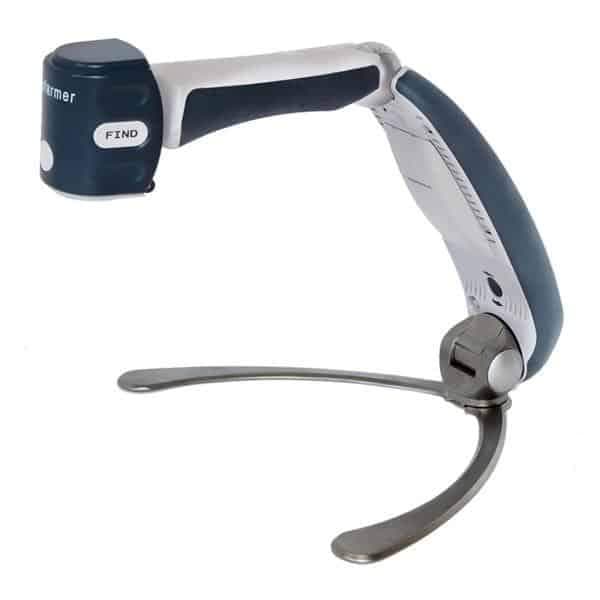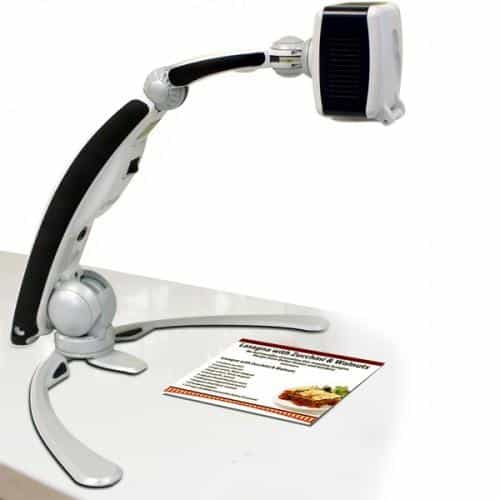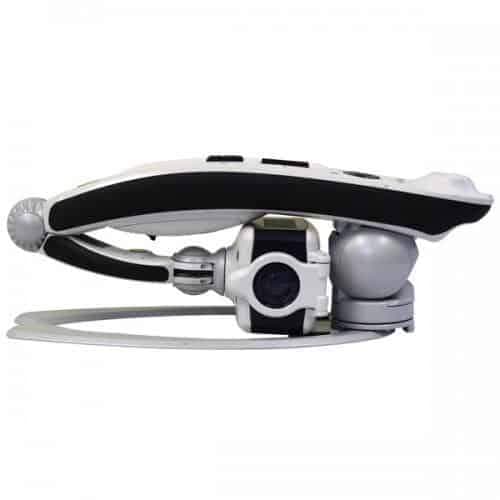Enhanced Vision Transformer HD High Performance Portable Video Magnifier - Built In Wi-Fi
Enhanced Vision Transformer HD High Performance Portable Video Magnifier - Built In Wi-Fi
Share
SKU:TRHTEA
Out of stock
Couldn't load pickup availability
We accept









Transformer HD – Portable Electronic Magnifier with Built In Wi-Fi
Transformer HD is a high performance portable video magnifier (CCTV), featuring a Sony ® Full HD 1080p 3-in-1 camera, Wi-Fi capability, and optional Full Page Text-to-Speech (OCR). Transformer HD features built in Wi-Fi, HDMI, and USB 3.0 connectivity for your laptop, desktop computer, tablet or monitor. Compatible with popular magnification software programs, Transformer HD is a portable and powerful low vision solution for school, work or home.
Product Features:
- Sony ® Full HD 1080p auto focus 3-in-1 camera for self-viewing, reading or distance viewing
- 4 desktop positions available: left, right, forward & upright
- Magnification up to 30x on 24” LCD
- 32 viewing modes to optimize contrast and brightness
- Connects via HDMI, USB 3.0 or Wi-Fi
- Work in Full or Split Screen mode
- Removable legs for suction base option
- Record and save videos for later playback
- Built in LED lighting
- 2 hour minimum removable battery with internal charger (spare battery and external charger also included)
- Carrying Case included
- 2 Year Warranty

OCR Features:
- Optional 13 Megapixel Camera for accurate Full Page Text-to-Speech (OCR)
- Adjustable magnification and color viewing modes in OCR
- Reading preview lets you read the entire page or use your cursor to select where to begin reading
- Multiple language recognition
- Male & Female premium voices
- Save & recall documents, pictures, and export files to your computer
Specifications
Product Measurements
-
Opened in Reading Configuration
- Length: 15.4 inches (39.1 cm)
- Width: 16.0 inches (40.6 cm)
- Height: 13.5 inches (34.3 cm)
-
Fully Closed Configuration
- Length: 13.5 inches (34.3 cm)
- Width: 4.8 inches (12.2 cm)
- Height: 4.9 inches (12.4 cm)
Camera
- CCTV Camera & OCR Camera (On Enabled Units)
Product Weight:
- 3.45 lbs = 1.56 kgs
Magnification Range
- On 24” LCD (1.7x-30.6x)
Power Supply
- Power supply is 100-240V~, 50-60Hz, 9VDC, 2.6A
Battery Life
- More than 2 hours of continuous operation.
Equipment Classification (IEC 601-1):
- Type of Protection: Class 1
- Degree of Protection: Type B
- Mode of Operation: Continuous
- Operating temperature range: 0-40°C / 32-104°F
- Storage/transport temperature range: 0-60°C / 32-140°F
Warranty: 2 Years
*Product specifications subject to change without notice.


